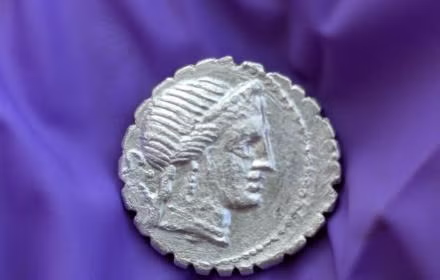Your support helps us to tell the story
Support NowAs your White House correspondent, I ask the tough questions and seek the answers that matter.
Your support enables me to be in the room, pressing for transparency and accountability. Without your contributions, we wouldn't have the resources to challenge those in power.
Your donation makes it possible for us to keep doing this important work, keeping you informed every step of the way to the November election

Andrew Feinberg
White House Correspondent
Archaeologists have unearthed a hoard of Roman coins on the Italian island of Pantelleria in the Mediterranean Sea, shedding more light on the region’s ancient history.
The 27 silver coins, dating from between 94 and 74BC, were found during restoration work at the historical site of the Acropolis of Santa Teresa and San Marco.
While assessing damage at the site, researchers from Germany’s University of Tübingen noticed small coins gleaming in loosened soil.
They dug the ground and found more. The coins were found to carry the design of a winged figure riding a chariot drawn by three horses. These were symbols engraved on the denarii, the main silver currency minted during the late Roman Republic nearly 2,000 years ago.

A trove of over 100 Roman silver coins had previously been found at the same site in 2010. The earlier dig had also unearthed three famous imperial heads of Caesar, Agrippina and Titus.
Taken together, the finds indicate that the Pantelleria island was a trade and cultural hub in the Mediterranean.
“This discovery offers valuable information for reconstruction of the events, trade contacts, and political relations that marked the Mediterranean in the Republican age,” Francesco Paolo Scarpinato, the island’s councilor for cultural heritage, said.
Thomas Schäfer, leader of the excavation, said archeologists had been “dining for 25 years in San Marco”. “It’s a wonderful site, fortunately intact, it has never been touched in centuries.”
Researchers suspect the coins were buried during a pirate attack, which coastal Roman villages routinely faced in the first century BC.
“There were frequent raids against the villages along the coast and it is easy to imagine someone hid their ‘nest egg’ when the ships arrived, without being able to retrieve it anymore,” researchers said.
Dr Schäfer noted the treasure could have ended up where it was found “after being hidden intentionally during an invasion”.
Disclaimer: The copyright of this article belongs to the original author. Reposting this article is solely for the purpose of information dissemination and does not constitute any investment advice. If there is any infringement, please contact us immediately. We will make corrections or deletions as necessary. Thank you.



